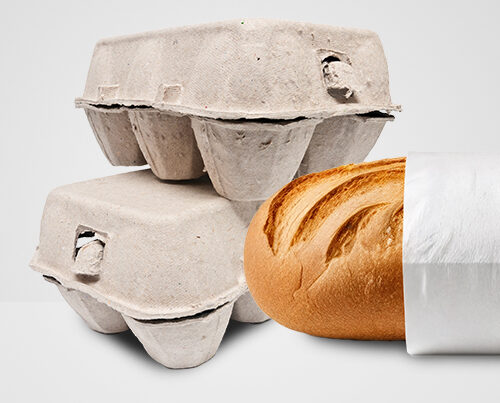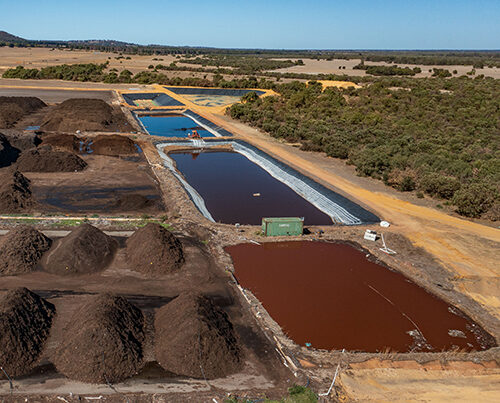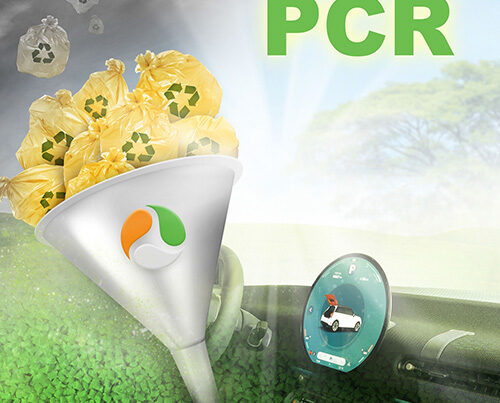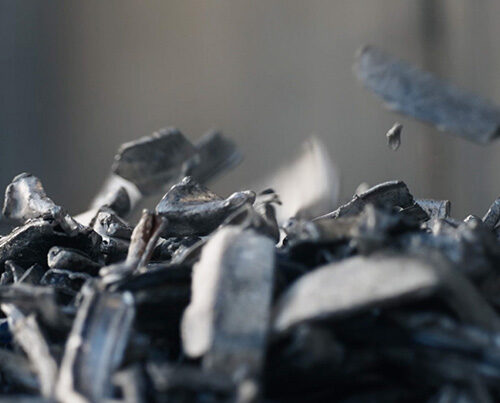And the results are astounding: if waste is handled correctly, then hundreds of millions of tonnes of CO2 can potentially be avoided every year by 2035. Dr Bärbel Birnstengel and Richard Simpson, the study’s authors, discussed the most important findings in a recent interview and explained what needs to be done to make the very most of the promising options.

Dr Bärbel Birnstengel is a Principal at Prognos AG. As a member of the institute’s ‘Business, Innovation, Region’ business unit, her work primarily focuses on analyses of European markets and competitors relevant to waste and secondary raw materials, strategic consultancy work and commercial due diligence. She is a certified auditor for DIN EN ISO 9001:2015 quality management systems.

Richard Simpson is an expert at Prognos AG in Düsseldorf. He studied a number of subjects including economics at the University of Sao Paulo where he took a detailed look at the benefits of the climate change measures taken in Brazil. His work at Prognos focuses primarily on modelling and statistical data analyses, including relevant indicators for the green economy and the circular economy.
RE:VIEWS: Dr Birnstengel and Mr Simpson, perhaps we could take a look at the status quo before turning our attention to the future. What is the European waste management sector doing today to cut CO2 emissions?
Prognos: By providing industry with recycled raw materials and by generating energy from non-recyclable waste, virgin raw materials are able to be substituted and primary fuels replaced, both of which avoid greenhouse gases. Our study, which takes around 19% of the total volumes of waste into account – and these are materials that have a particularly high savings potential – shows that the circular economy is already helping to cut CO2eq by 122 million tonnes. This figure is not shown in full, however, as some of these reduced greenhouse gas emissions have been attributed to the individual industrial sectors. We decided to take a look at a 20-year period for this study. Based on this time horizon, the net emission burden of the waste management sector lies at 13 Mt CO2eq. As far as the waste streams selected are concerned, therefore, the sector is already as good as climate neutral. These numbers clearly show the great potential of the waste management sector as part of a circular economy.
RE:VIEWS: You included two projections in your study in order to explore potential future CO2 reductions – a more cautious and a more ambitious option. If we could start with the ambitious scenario: what is the very best outcome and what conditions must be met for this to be achieved?
Prognos: Based on the current 13 Mt CO2eq burden, the ambitious scenario sees a net avoidance of -283 Mt CO2eq by 2035 or 296 Mt CO2eq compared to 2018. When we calculated the figures for this particular model, we kept waste volumes constant at 2018 levels, extended the valid recycling rate for municipal waste set out in the EU’s current Waste Framework Directive to include industrial and commercial waste and then further increased this recycling rate. What’s more, we assumed that landfilling will be phased out. We are, though, well aware that landfills will continue to play a part in waste treatment as there will always be some kinds of waste that must be sent to landfill and so we reduced these volumes to an absolute minimum. As far as the waste types considered by us are concerned, all residual materials that could be thermally treated were assigned to thermal treatment.
About the study
The study, “CO2 reduction potential in European waste management”, was published in January 2022 and examines how the waste management sector can potentially help the EU to achieve its goal of becoming carbon neutral as set out in its Green Deal. Taking a 20-year horizon, the researchers developed two scenarios using 2018 as their reference year. It includes the 27 member states of the European Union and the United Kingdom. The study was compiled by the Prognos and CE Delft research institutes on behalf of four European waste management associations: the European Waste Management Association (FEAD), the Confederation of European Waste-to-Energy Plants (CEWEP), the RDF Industry Group and the Dutch Waste Management Association (DWMA).
The study (English) can be found on Prognos’ website in the ‘Studies & Projects’ chapter where it can also be downloaded as a PDF
RE:VIEWS: A potential reduction of 296 Mt CO2eq – from a purely arithmetical point of view that is the total annual volume of CO2 emissions of Belgium and the Netherlands1 put together. Were you surprised by this result?
Prognos: Not by some aspects. It is already a well-known fact that recycling waste and substituting virgin raw materials, such as ferrous metals and aluminium, can cut CO2 emissions by a huge amount. What was surprising though was just how high the CO2 burden caused by landfilling organic waste – such as paper or biowaste – actually was. Methane gas may be short-lived but it has a very big impact, which meant it played a particularly significant role over the 20-year period.
RE:VIEWS: The somewhat less ambitious scenario assumes that the laws and targets that apply in the European Union today are simply implemented. This means a recycling rate of 65% and a maximum 10% of municipal waste being sent to landfill. What can be achieved under these conditions?
Prognos: Existing EU legislation is just one part of this scenario. We went a little bit further here as we transferred the recycling goals to industrial and commercial waste as well. In this scenario, CO2eq emissions can be significantly reduced by 150 million tonnes to a net burden of -137 Mt CO2eq, primarily brought about by the low volumes of landfilled paper and organic waste. In addition, there would be less residual waste – and it is this material that contributes to a higher CO2 burden – thanks to the increased recycling rates and more material being sent for thermal treatment.
With a baseline CO2 net burden of 13 Mt CO2eq, the waste management sector is already as good as climate neutral.
RE:VIEWS: Looking at the study as a whole, is there one particular factor that can be seen as being the biggest driver of success?
Prognos: Yes, it is clearly the move to phase out landfilling wherever possible – in particular the landfilling of organic waste. The maximum reduction in landfilled organic waste has the highest potential to reduce CO2.
RE:VIEWS: What impact does substituting virgin raw materials with recycled raw materials have?
Prognos: Recycling and the substitution of virgin raw materials resulting from this play a major role in reducing CO2 emissions. Together, for example, ferrous metals and aluminium are estimated to reduce CO2eq emissions by around 180 million tonnes. This puts ferrous metals and aluminium at the very top of the list of net emission savings brought about by recycling. Having said that, though, this area is already very successful today. Recycling rates of these metals are already very high which means their potential to reduce additional emissions in the future is low.
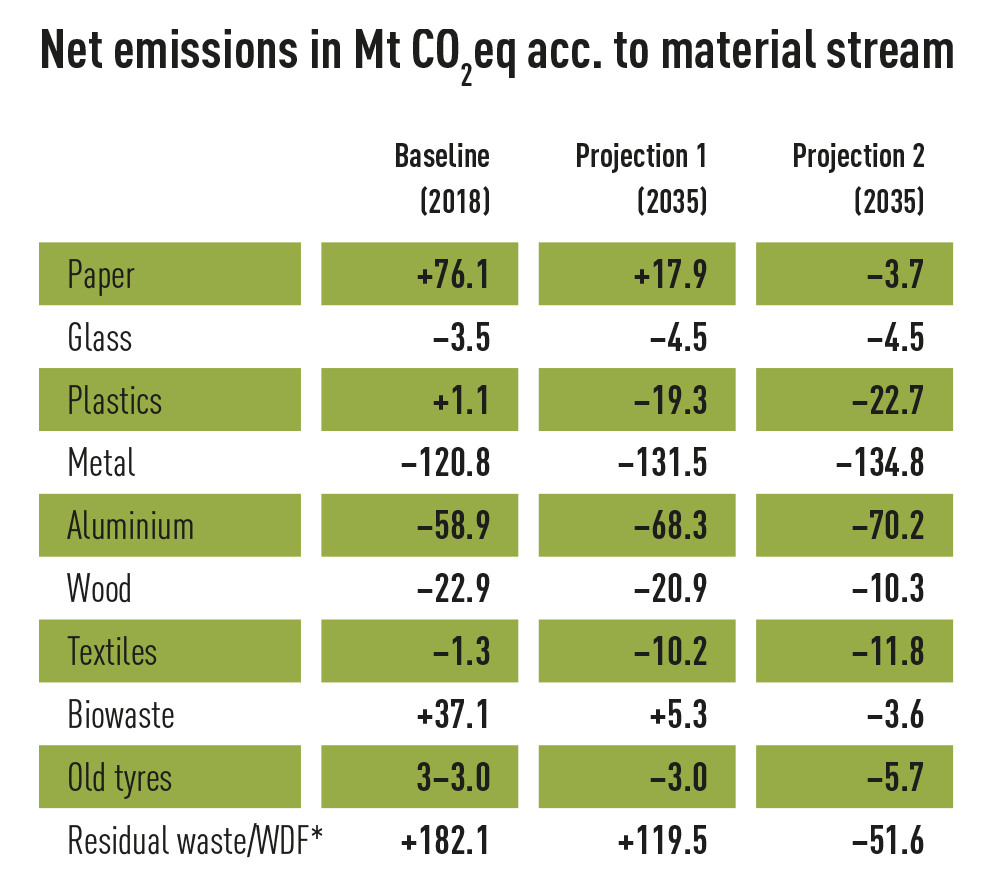
The baseline year 2018 without as yet unknown treatment routes, with GWP values (global warming potential) for a 20-year time horizon; Source: Prognos & CE Delft, CO2 reduction potential in European waste management, January 2022
* incl. overlap with material waste streams
RE:VIEWS: You take a look at nine waste streams in your study. Besides the ferrous metals and aluminium, these include paper, glass, plastics, wood, textiles, old tyres and organic waste. Looking to the future, which of these materials have a particularly high potential?
Prognos: The biggest additional potential can be found among organic wastes, such as paper and biowaste, as well as residual waste or rather refuse derived fuels. As far as paper and biowaste are concerned, this can be achieved by increasing rates of recycling and composting and anaerobic digestion respectively and reducing the volumes being sent to landfill. It was not possible to look at all the different types of waste in this study. Other kinds of refuse, of course, also have the potential to reduce emissions including the largest material stream generated, namely mineral construction waste. Not least because it has already been shown that hazardous waste, such as solvents and old oil, can be processed and reused.
RE:VIEWS: Looking at a product’s life cycle, the waste management sector is just one station, so to speak, of many. What interaction is required to achieve the highest potential reduction?
Prognos: Much greater efforts will be required from all stakeholders along the whole of the chain if this potential is to be realised. A coordinated approach is needed here and we must adopt a circular business model, starting with sustainable product designs and a low-waste or zero-waste production of long-lasting and reparable goods. We, the authors, are well aware that these potential CO2 savings cannot be realised by the activities of the waste management and recycling sector alone. It would be wrong to make the waste management sector solely responsible for this.
96 Mt CO2eq are already being avoided today thanks to the sustainable way paper, glass, plastics, ferrous metals, aluminium, wood, textiles, old tyres and biowaste are being handled.
RE:VIEWS: How big an impact can networking with upstream sectors have, for example on creating the best possible recyclable product designs?
Prognos: That is an important point. Both product design and production methods determine how recyclable a product is when it reaches the end of its useful life. One of the biggest challenges posed here is the composite materials used in packaging. To make recycling easier, the design should preferably use just one type of material rather than a mixture. The colours used are not unimportant either. Digitisation along the supply chain could also bring about considerable momentum if data can be recorded and supplied from all the different sectors. Digital twins – i.e. a virtual representation of products – can provide really useful information about the composition of a product. This, in turn, would enable the operations that are used to recover the valuable raw materials to become more comprehensive, more efficient and of a higher quality.
RE:VIEWS: We also have consumers between the producers and the waste management sector. How significant is their role in all of this?
Prognos: They have a really important role. Consumers who accept products made of recycled raw materials and then ensure these products are sent for recycling when they are no longer needed play a key role here. The circular economy relies on the correct segregation of waste products and on the performance of the sorting plants to be able to produce high quality recycled materials and transform non-recyclable materials into energy. In theory, each individual person helps to increase the potential to reduce CO2 emissions by separating their waste because only high quality recycled raw materials can be returned to production cycles. If the materials get contaminated by being thrown into the wrong bin then we have effectively also taken away a little bit of this potential. Companies building plants and machinery also make an important contribution. Modern sorting and recycling technologies are able to recover more materials from the waste streams, helping to reduce the volumes of sorting and processing residue.

By implementing current waste legislation and extending the goals for municipal waste to include industrial and commercial waste, annual emissions can potentially be reduced by 150 Mt CO2eq by 2035.
RE:VIEWS: The waste management sector, though, needs the support of relevant legislation. Should the regulations we have be made tougher or be extended to cover other areas?
Prognos: Rules and regulations are certainly necessary but we’ve also seen that they can fail to achieve their objectives because they’re not systematically enforced. We may be able to achieve a lot with rules and bans but there’s no way we’ll be able to accomplish everything that’s possible with them alone. We’ll only succeed if we are able to convince every stakeholder of the benefits and bring about a genuine value change. This won’t be an easy path to take but it is doable.
RE:VIEWS: Today’s recycling systems are continuously being further developed, for example the chemical recycling of plastics. Could these new systems increase the potential CO2 savings you calculated even further?
Prognos: Yes, the circular economy will continue to need an innovative environment so that it can collect, sort and recycle waste more efficiently and in a more segregated way. In this context, the chemical recycling of plastics represents one of many promising, innovative technologies.
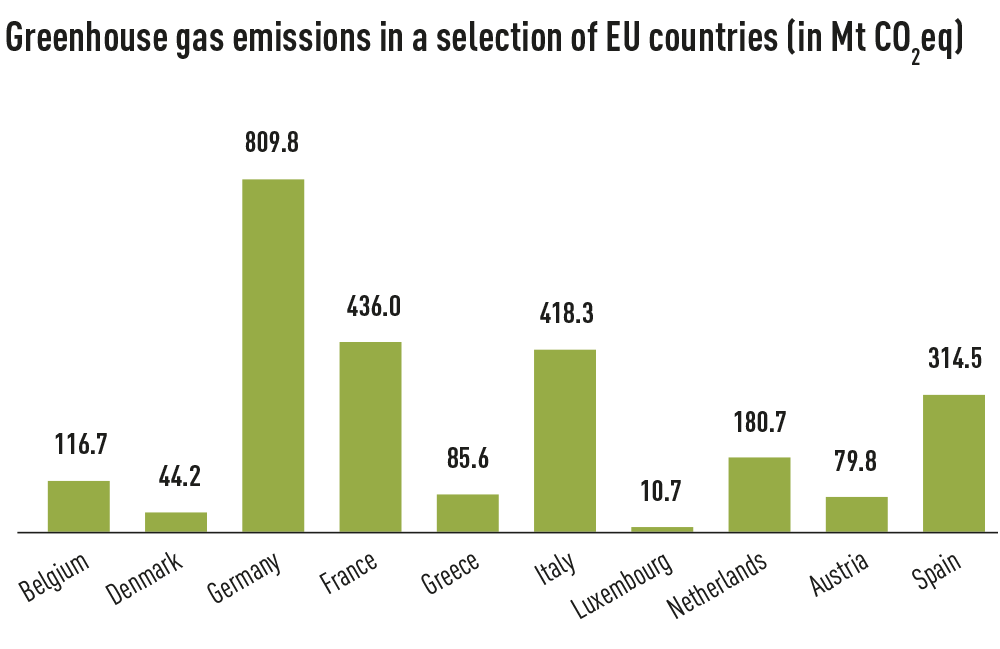
2019, with GWP values (global warming potential) for a 100-year time horizon
Source: UBA [Federal Environment Agency], September 2021
RE:VIEWS: The intention of the study is to support the efforts being made to achieve European climate neutrality and to provide decision-makers with useful facts. What are your recommendations as we head into the future?
Prognos: The answer to this question is effectively a summary of everything we’ve just discussed: if the more ambitious forecasts are to be reached, then the targets for municipal waste must be extended to include industrial and commercial waste streams as well. Waste that can be recycled or used for energy recovery or thermal treatment should be diverted from landfills and sent to such facilities. What’s more all of the stakeholders along the whole of the supply chain must work together more closely to ensure that there is as little waste as possible and that as many materials as possible can be recovered for reuse. Both the goals and the measures in the narrower field of waste management must be integrated into the whole of the economic system and be supported with goals and measures in the upstream areas of the supply chain.
RE:VIEWS: A memorable conclusion. Dr Birnstengel, Mr Simpson, many thanks for taking the time to speak to us.
By driving forward the circular use of materials and ensuring materials that are currently being landfilled are recycled for reuse or thermally treated, annual emissions in Europe can potentially be reduced by 296 Mt CO2eq by 2035.
Image credits: images 1, 4: Adobe Stock: bartsadowski; images 2, 3: Annette Koroll







